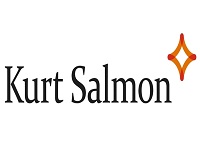"The ‘2017 Global Sourcing Reference’ report from Kurt Salmon highlights as sourcing costs rise, retailers are being urged to reinvent their operating models to add value in their supply chains. Fast fashion entails retailers and brands to react equally as quickly to meet the demand of consumers, which has resulted in stiff competition. In order to beat one another, brands are introducing more lines per year at lower costs. The report further emphasises speedy production cycles are having a negative impact on the entire supply chain, with fashion brands and retailers struggling to keep up."

The ‘2017 Global Sourcing Reference’ report from Kurt Salmon highlights as sourcing costs rise, retailers are being urged to reinvent their operating models to add value in their supply chains. Fast fashion entails retailers and brands to react equally as quickly to meet the demand of consumers, which has resulted in stiff competition. In order to beat one another, brands are introducing more lines per year at lower costs. The report further emphasises speedy production cycles are having a negative impact on the entire supply chain, with fashion brands and retailers struggling to keep up.

Another report, ‘From Cost Focus to True Value Creation – On the Road to Analytical Sourcing & Supply Chain,’ outlines both commercial fashion brands and premium/luxury brands are finding it difficult to maintain comparable levels. Often, even total sell-through falls to levels below 70 per cent, causing inevitable margin losses from skyrocketing markdowns far beyond benchmark levels of 12-15 per cent.
Rising sourcing cost
Despite losing market share, China is still by far the biggest apparel exporter to the EU, at 28 per cent. While Bangladesh’s share is 19 per cent, Turkey 11 per cent, and India has 6 per cent. Meanwhile countries like Poland and the Czech Republic, are increasing their stake in the sourcing landscape. Far East importers make up 72 per cent of the value of top 20 countries, whereas Greater Europe stands for 22 per cent, and Africa 6 per cent.
Production Cost Index (PCI) values are rising sharply across all main sourcing regions. Plus, global cost increases for apparel and footwear production have steadily continued during the last two years. Sourcing markets with stable costs are rare while the majority show strong to strong increases of production costs. This does not only affect China, which has seen a strong upward trend for many years but also many of the typical low-cost sourcing destinations in Southeast Asia, such as Bangladesh, Pakistan and Indonesia. The report states recent cost increases have been driven by both rising labour costs and strengthening local currencies in the sourcing markets versus the US dollar and the euro.
Higher labour costs are due to rising minimum wages and the growing competition for skilled factory workers and increasing alternative work offers, especially in China. To capitalise on cost-effective markets, many retailers have shifted production from established yet increasingly costly regions, such as Southeast China, to less developed but cost-wise regions, such as Western China, Myanmar, and Cambodia. But, this is a temporary solution because even though cost pressure may reduce in the short term, it is a risk to flexibility and operational performance as well as product quality and CSR.
Sourcing priorities
Beyond production cost optimisation, there are more powerful levers that can help solve the current market challenges many brands and retailers are facing. The markdowns of 15-25 per cent of net sales are a powerful source of gross margin improvement. A close alignment between production development and supplier can play a significant role in unlocking this potential by providing ‘true’ consumer value and brand differentiation with regards to product innovation, time to market, reliability and execution excellence, as well as superior technical capabilities and quality.
As per the report, speed to market is the number one sourcing priority by respondents, followed by social and environmental compliance, quality, innovation management and end-to-end value chain collaboration. Asked about speed models such as rapid replenishment, test and scale, read and react or trend injection, two-thirds of respondents have them either in place or are currently planning to introduce them.
Supply chain ties
The report suggests differentiated supplier capabilities must be leveraged and developed in close collaboration along the entire value chain. Intensified collaboration will also mean more common standards, definitions and KPIs. An integrated cloud-based database, for example, provides end-to-end transparency and control, internally as well as with third party suppliers. Furthermore, it allows access to big data across the value chain and enhances predictive analytics for improved merchandise planning and production capacity planning etc. In re-shaping the fashion value chain, technology will prove to be the key enabler to provide the tools for analytical optimisation.












